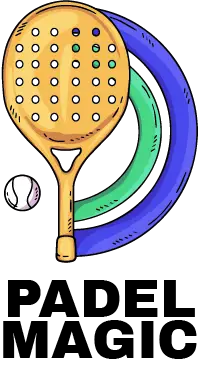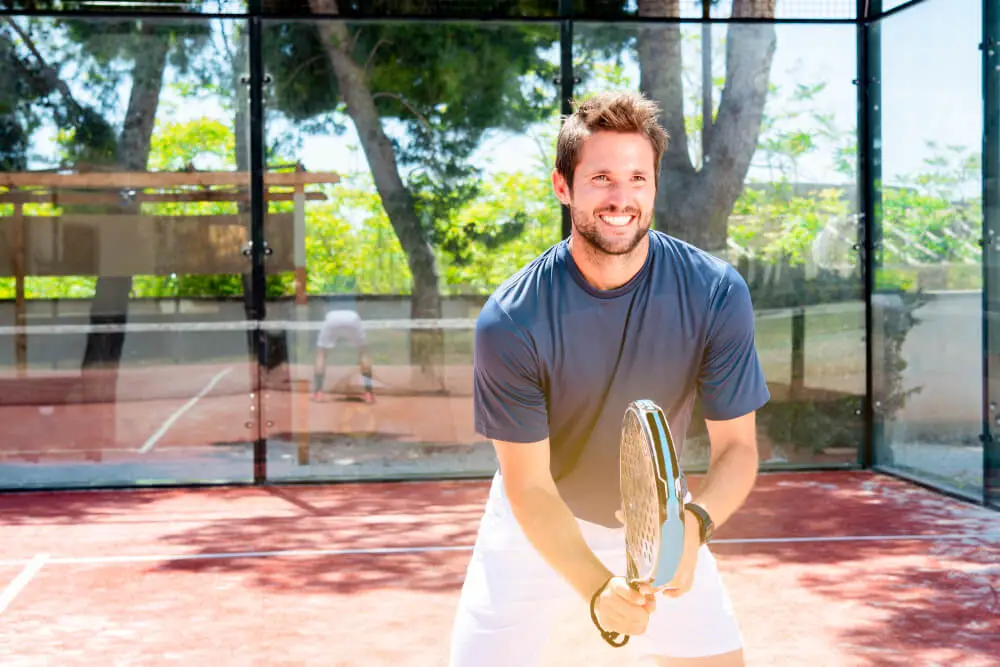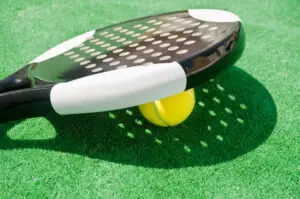Hello and a warm welcome to all Padel enthusiasts! If you’re new to the world of Padel or looking to deepen your understanding of the game, you’ve come to the right place.
As seasoned Padel coaches passionate about sharing knowledge, we’re excited to guide you through the essential rules and gameplay techniques of Padel. This dynamic sport, a perfect amalgamation of tennis and squash, offers an exhilarating experience for players at all levels.
This page will cover everything you need to know to get started and enjoy the game. Let’s embark on this padel adventure together, and we promise to make your journey both informative and enjoyable!
Court and Equipment
Padel is played on an enclosed court, significantly smaller than a tennis court, with walls on all sides. These walls play a crucial role in the game, as players can use them to rebound the ball, similar to squash.
The padel racket is another unique aspect. It’s solid and stringless and features perforations, which significantly influence ball control and shot precision.
For beginners, familiarizing yourself with the court layout and practicing with the specialized racket are essential steps in mastering the fundamentals of the game.
Padel Serving Rules
Mastering the serve in padel is essential for beginners. The serve must be underhand, meaning the ball is struck below waist level. Start by standing behind the service line, and the ball must be bounced on your side before serving.
The serve should land diagonally in the opponent’s service box, and it’s crucial that it doesn’t hit the back wall directly on the serve.
If it touches the side wall after bouncing in the service box, it’s still a valid serve. Remember, two consecutive faulty serves result in losing the point. Practice your serve to make it both consistent and strategically challenging for your opponent.
- ALSO READ: Avoiding Illegal Padel Serves
Scoring System in Padel
The scoring system in Padel is identical to tennis, which is simple yet requires attention from beginners.
A game is scored as love (zero), 15, 30, 40, and game. If both players reach 40, the game goes to ‘deuce’. From deuce, a player must win two consecutive points to win the game, called ‘advantage’ and ‘game.’
Matches are typically played in best-of-three sets, where winning six games with at least a two-game lead is needed to win a set. Understanding this scoring system is crucial as it influences game strategy and the pressure points during the match. Remember, consistent scoring knowledge is as important as physical skill in padel.
Ball in Play
For beginners, understanding how the ball is played in padel is essential. After the serve, the ball can be hit either before or after a single bounce. The unique aspect of padel is using the walls; the ball can rebound off any wall but must not hit the fencing directly from a shot.
If the ball bounces twice on the ground, the point is lost. It’s essential to anticipate the ball’s trajectory after it hits the walls, which adds a tactical layer to the game. Mastering how to use the walls to your advantage and predicting how your opponent might use them is a key skill in Padel, making the game both challenging and exciting for beginners.

Doubles Play in Padel
Doublesplay is at the heart of Padel, emphasizing teamwork and strategic positioning. In doubles, players take turns hitting the ball, with each team member responsible for covering their side of the court.
Effective communication and understanding between partners are crucial. Positioning is key; one player typically plays close to the net (the net player) while the other stays back (the back player), ready to handle long shots. The switch of positions and roles can happen fluidly during the game, depending on the play’s dynamics. For beginners, it’s important to practice with your partner to develop a mutual understanding of each other’s playing styles and strategies, which is essential for success in doubles padel.
Net Rules
In padel, the net plays a central role and its rules are straightforward, especially important for beginners to grasp. During service, if the ball hits the net and still lands in the correct service box, it’s considered a let, and the serve is replayed.
However, in regular play, if the ball hits the net and goes over into the opponent’s court, the ball is still in play.
This rule is similar to tennis and requires players to be always prepared for a return shot, regardless of whether the ball clips the net. Understanding and anticipating net plays are key skills in Padel, adding an unpredictable element to the game.
Padel Basic Rules
| Rule | Description |
|---|---|
| Court Size | 20m X 10m area enclosed by walls, nets, or fences. |
| Net Height | 0.88m at the center, rising to 0.92m at the ends. |
| Racket Dimensions | Maximum length of 38 cm and a minimum width of 24 cm. |
| Racket Safety Strap | Mandatory safety strap on all rackets, to be used during play. |
| Ball Material | Rubber, diameter of 40 mm, and weight no more than 45 grams when dry. |
| Team Composition | Teams comprise two players each. |
| Scoring | 15-30 point system like tennis; in 40-40, a 2-point lead is needed. |
| Serving | Serve from back rectangular box. Ball must bounce before serving, under the waist. Serve must land in opponent’s diagonal service box. First and second serves allowed. |
| Hitting Rules | Ball must be hit with a padel racket and bounce off the floor before hitting the glass or fence. Ball can bounce only once. Players can hit the ball outside the walls. |
| Scoring Points | Points scored when the opponent fails to return the ball over the net without faulting. Games decided by six consecutive points; ties at five games lead to extra points up to seven. |
| Set Format | Best-of-3 sets normally; some professional tournaments may require best-of-5 sets. |
Frequently Asked Questions
Yes, in padel, players can use the walls to rebound the ball, similar to squash. This is a distinctive aspect of the game that adds a strategic element to play.
Padel uses the same scoring system as tennis. Points are scored as 15, 30, 40, and game. If both players reach 40, the game goes to 'deuce', and a player must win two consecutive points to win the game.
Padel is played on an enclosed court using solid, stringless rackets and a rubber ball. Players serve underhand, and the ball can be played off the walls. The objective is to hit the ball over the net into the opponent's court. Points are won when the opponent fails to return the ball legally.
Yes, you can play the ball off the side wall in Padel. However, on the serve, if the ball hits the side wall before the ground in the opponent's court, it's considered a fault.
It is possible to score an ace in padel, which occurs when the server hits a shot that the opponent cannot touch with their racket. However, due to the smaller court size and the serve being underhand, aces are less common than in tennis.
Yes, in Padel, you can hit the ball onto your own walls at any time. However, the ball must first bounce on the ground before hitting the wall when returning a shot.
Yes, padel is typically played in doubles, with two players on each team. While singles play is possible, the game is designed and primarily played as doubles.
Padel can be considered easier to learn than tennis for beginners due to the smaller court and the use of walls. The underhand serve and solid rackets also make it more accessible for new players.
Padel is generally not difficult to learn, especially for those familiar with racket sports. Its rules and gameplay are straightforward, making it a popular choice for players of all ages and skill levels.







